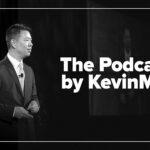In order to develop good speech and conversation skills, a child must pay attention to the speaker and respond back when spoken to. The importance of sustained attention, listening to, and focusing on another person by the young child is often overlooked and not recognized by parents and therapists alike. Many children with a speech delay and those with suspected autism show decreased attention along with their speech delay. Many parents, as well as therapists, have difficulty addressing this issue. A child who pays attention does much better in speech therapy and other therapies.
Attention therapy is a method that can be used to teach young children how to pay attention to you when you talk to them. It is a method that can teach young children how to respond back to you, talk to you, and follow your directions. It consists of a series of activities that encourage children to look at you and listen to you when you talk, instead of ignoring you. It encourages children to respond more regularly to their name, respond back to you, talk to you, and follow basic instructions. The attention therapy activities start at a very basic level and then, over time, gradually become more complicated after the child has learned the basic foundation skills. The focus and goal of attention therapy are to teach children that parents and caretakers are more important than screens and toys. The goal is also to teach children that looking at and listening to an adult is more important than looking at or listening to a screen or a toy. This method does not just encourage children to follow your routines or directions the way some other behavior health therapies do; instead, it teaches children how to look at you, listen to you, pay attention to you, look at you to get help instead of just pulling you, respond back to you, and talk to you.
This method has been used for many years in the early intervention program. It has generally been used with children between the ages of 12 months and 4 years who show delays in responding to their name, delays in attending to other people, delays in joint attention skills, and delays in receptive and expressive language skills. Some of these children were diagnosed with autism, but many were not. These children are more interested in doing what they want to do when they want to do it, instead of doing what the parents or caretakers want them to do. These children are often described as “very independent,” as often “ignoring” their parents, and as having a speech delay.
This method can be used over several months or even much longer. The length of time depends upon how fast the child responds and learns the skills. It is somewhat like learning a new language or skill. The more exposure to the method and the more practice every day, the faster the skills are learned. The faster the child learns, the shorter the need for therapy will be, and the faster attention, responses, and verbal conversation occur.
John D. Michael is a pediatrician.
















![Catching type 1 diabetes before it becomes life-threatening [PODCAST]](https://kevinmd.com/wp-content/uploads/Design-2-190x100.jpg)



![How political polarization causes real psychological trauma [PODCAST]](https://kevinmd.com/wp-content/uploads/Design-4-190x100.jpg)
